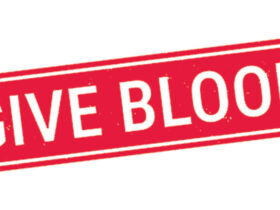Abdominal Aortic Aneurysms
Abdominal Aortic Aneurysms (AAA) are life-threatening. In fact, they are the 15th leading cause of death in the U.S. in people over the age of 65, but it can happen to much younger individuals as well depending on their risk factors and lifestyle. The larger they grow, the more likely a rupture will occur. Approximately 200,000 individuals are diagnosed with an abdominal aortic aneurysm every year.
AAA Symptoms
• Intense Abdominal pain
• Back pain
• Chest pain
• Flank pain
• Dizziness nausea
• Shortness of breath
• Belly button pulsations
• Foot feels cold to touch
• Black or blue toe
• Infection (fever, weight loss)
Large aneurysms or those that are proliferating will likely need surgical repair. Smaller, slow-growing aneurysms can usually be monitored every few months.
Carotid Artery Disease
Plaque in the arteries (atherosclerosis) can cause many issues, but when the carotid arteries are blocked, the stakes are higher due to the likelihood of plaque breaking off or total occlusion of the artery, which can cause an ischemic stroke. When vascular surgeons are attempting to clean out, repair the carotid artery, and place a stent, the risk of stroke is also higher. It is a very intricate procedure that should only be performed by highly qualified surgeons.
A carotid endarterectomy, where the plaque in the major blood vessel to the brain is cleaned out and repaired, is a surgery meant to prevent stroke. This should be performed via a TCAR procedure, which is a minimally invasive Transcarotid Artery Revascularization. The TCAR procedure significantly reduces the risk of stroke during the surgery as compared to conventional stenting.
PAD
Individuals with peripheral arterial disease (PAD) have blood flow disruptions, usually in the feet and legs, but it can also occur in the brain, arms, and heart. When the blood vessels are narrowed or damaged, the blood flow becomes obstructed, and other complications can coincide. PAD can lead to severe medical conditions. Currently, 8.5 million Americans have peripheral artery disease.
Symptoms of PAD
• Claudication (Pain after walking or exercising in
calf, hips or thighs)
• A change in the color of your skin on feet or legs
• Erectile dysfunction (males)
• Hair loss or diminished hair growth on feet and legs
• Impeded toenail growth
• Leg numbness or weakness
• Leg or foot feels cold compared to opposing limb
• No pulse or a weak pulse in your legs or feet
• Non-Healing ulcers on feet or legs
• Shiny or thickened skin on your legs
Diet and Exercise
Maintaining a healthy diet is critical for keeping your lipid levels in proper balance, coordinately it will assist in supporting the vascular structures through nutrient and antioxidant-dense foods. Preventing atherosclerosis, or the hardening of the arteries due to plaque build-up can be achieved through medications as well. However, if the blockage from PAD is severe and life-threatening, a medical procedure will be necessary to open and repair the artery to allow blood to flow normally again.
PAD Treatment
• Peripheral Vascular Stent
• Angioplasty
• Bypass Grafting
• Worst-Case May Require Amputation
Special Free Lifestyle Screening at Our Bonita Springs Location (regularly $99.00)
Lifestyle Screening
Our Lifestyle Screening is a simple non-invasive ultrasound scan. We will check for three of the deadliest silent killers that could be lurking in your body. The exam only takes 15 minutes and could save your life.
Abdominal Aortic Aneurysm (AAA) – A weak lining of the artery wall can cause an abdominal aortic aneurysm. These fragile bulging arteries can rupture without warning and can cause sudden death.
Carotid Artery Disease (Stroke) –The carotid arteries supply blood flow directly to the brain. A blockage can develop in the artery. This blockage can cause small clots to form on the plaque surface.
These small clots can “break off” into the bloodstream and up to the brain causing a stroke.
Peripheral Artery Disease (PAD) – Peripheral Arterial Disease is the narrowing of the arteries to the arms or legs. PAD can cause poor circulation and the decrease in blood to your arms or legs may result in pain, non-healing infections, or wounds that can even result in amputations. Nearly 40% of people with PAD are at risk of having a heart attack within 5 years.
If you or a loved one has any of the venous symptoms or risk factors discussed above, you must seek medical attention immediately. Making an appointment with a vascular surgeon specializing in venous disease is critical.
Vascular & Vein Center at Gulfcoast Surgeons
The Vascular and Vein Center at Gulfcoast Surgeons is one of the first and most respected vein clinics in Southwest Florida. Their surgeons, Dr. Abraham Sadighi, Dr. Michael Novotney, and Dr. Johan Escribano, have performed thousands of vascular and vein surgeries over the past 28 years.
They focus on diseases of the vascular system that can range from harmless but unattractive spider veins to dangerous conditions such as peripheral artery disease. Their caring and dedicated team will help you identify problems and offer the best treatment options for you.
The Vascular and Vein Center at Gulfcoast Surgeons offer a fully equipped vascular lab and state-of-the-
art Angio suite to provide a higher level of service and care for their patients. You’ll find comfort in knowing that they have a long-standing reputation for positive surgical outcomes that allow you to get back to healthy living.
Call the Vascular & Vein Center at Gulfcoast Surgeons today at (239) 344-7061 to make an appointment with a vascular surgeon who specializes in arteries and veins.
877-LEG-PAIN
gulfcoastsurgeons.com
Fort Myers
8010 Summerlin Lakes Dr., Suite 100
Fort Myers, Florida 33907
Cape Coral
1003 Del Prado Blvd., Suite 303
Cape Coral, Florida 33990
Bonita Springs
24301 Walden Center Dr., Suite 102
Bonita Springs, Florida 34134







